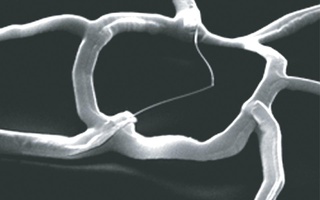"We don't just have the material or just how to put them together. We have constructed simple logical devices," he says. "There are huge challenges to meet but that is part of the excitement."
According to Lieber, the problem with current microchip fabrication methods is that the smaller the scale becomes, the higher the cost. Liebers says a "different approach" is necessary to make even smaller chips possible.
The solution: nanowires.
"These are wires as thick as your DNA, ten atoms across, that can be made very long," says Lieber. "They are as small as have been made."
BF: Moore's law lives on
Moore's law, developed by Gordon Moore, one of the founders of the computer processor manufacturer Intel, states that the number of calculations a microchip can do doubles approximately every eighteen months.
The law, which has held true since 1965, is dependent upon continual improvements in manufacturing methods.
Read more in News
Council Supports Online Concentration GuideRecommended Articles
-
Women's Lacrosse Drops to TerriersThe end of Spring Break hits all Harvard students hard. Yesterday, the women's lacrosse team had its rude awakening. After
-
Chemistry Professor Garners Prize for Nanotech InnovationHyman Professor of Chemistry Charles M. Lieber recently received this year’s World Technology Award for Materials for his work in
-
Team Develops Nanowire RingsHarvard researchers have developed a breakthrough nanowire technology integrated into high-tech electronic circuits—which, among other things, could help manufacturers significantly
-
Research Assists Cancer TestsHarvard researchers have found new ways of assembling nanowires—ultra-thin wires that have the potential to revolutionize electronics—and a new application
-
Chemistry Researchers Bend NanowiresA group of researchers in the lab of chemistry professor Charles M. Lieber have found a way to synthesize two- and three-dimensional versions of the microscopic strands known as nanowires—a breakthrough that researchers say may greatly increase the reach and applicability of the field by allowing scientists to design vastly more complex structures.
-
 ‘Cyborg Tissue’ Created
‘Cyborg Tissue’ Created













